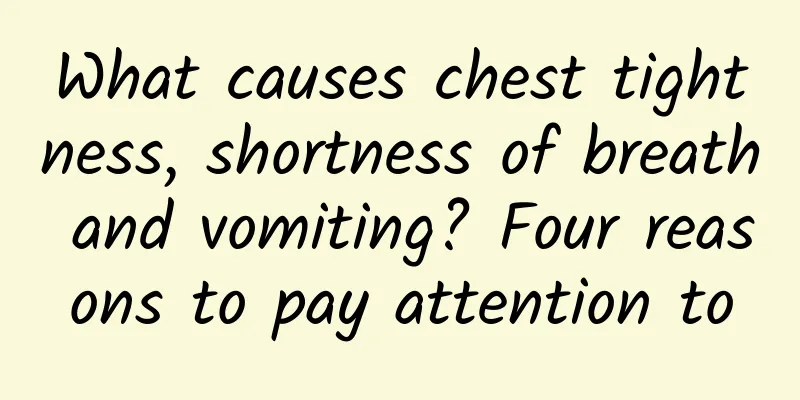Why do my ears feel stuffy when I wake up?

|
Many friends feel a stuffy feeling in their ears when they get up, as if something is stuck in their ears, and their hearing will be significantly weakened. There are many reasons for this phenomenon, such as otitis media, external auditory canal disease, water in the ears, etc. Friends need to check them out, find out the specific reasons and then use the corresponding solutions. In daily life, many people often feel stuffy ears, that is, there is a feeling of blockage in the ears, as if there is a ball of cotton stuffed in the ears, and they seem to feel the sound in their ears when they speak. In addition, stuffy ears are often accompanied by hearing loss, tinnitus, etc., which is very uncomfortable. Causes Our ears are divided into three parts: the outer ear, the middle ear and the inner ear. Abnormality in any part can cause ear stuffiness. Some common causes of ear congestion include: For the external ear, generally speaking, any lesions that can cause blockage of the external auditory canal can produce a feeling of stuffiness in the ear, such as earwax blockage, especially when earwax completely blocks the external auditory canal; furuncle in the external auditory canal, which can block the external auditory canal when the furuncle is large; foreign matter in the external auditory canal, children like to stuff erasers, mung beans, plastic beads, etc. into the external auditory canal when playing, and adults often have insects flying into the external auditory canal in summer; finally, some tumors of the external auditory canal, such as the common external auditory canal papilloma. For the middle ear, the main cause of ear congestion is Eustachian tube disease. The tympanic cavity of the middle ear is like a small cubic box, and the eardrum is on the side close to the external auditory canal. Only when the pressure in the eardrum is equal to the external atmospheric pressure, that is, the pressure on the inside and outside of the eardrum is equal, can the sound be best transmitted to the inner ear for people to hear. To achieve this, the ear and nose are connected by a tube called the Eustachian tube. This tube opens when you swallow or yawn, and the pressure in the tympanic cavity is maintained at one atmosphere when air enters the ear from the nose. If you have a cold or other condition, the mucous membrane at the opening on the nasal side of the Eustachian tube will swell and the tube will not be able to open, so the tympanic cavity will become an airtight cavity. Over time, the air inside will be absorbed by the mucous membrane, and the tympanic cavity will become a negative pressure, causing stuffiness in the ears. Common diseases that cause Eustachian tube dysfunction include: acute rhinitis, which is the common cold. At this time, the nasal mucosa becomes congested and swollen, causing the Eustachian tube pharyngeal opening to be narrowed; chronic rhinitis, allergic rhinitis and nasal polyps, severe nasal septum deviation, etc. can also cause the Eustachian tube pharyngeal opening to be narrowed and blocked; adenoids hypertrophy. Adenoids are lymphoid tissue located in the nasopharynx. They are often larger in children. As they age, the adenoids gradually shrink. Sometimes excessive hypertrophy of the adenoids can block the Eustachian tube opening; congenital cleft palate deformity. People with cleft palate have difficulty opening the Eustachian tube pharyngeal opening due to abnormal function of the levator veli palatine and tensor veli palatine muscles; nasopharyngeal tumors. Benign nasopharyngeal tumors are mainly nasopharyngeal angiofibroma, and malignant tumors are mainly nasopharyngeal carcinoma. A relatively rare situation is inner ear disease, which is mainly caused by membranous labyrinth lesions. The most important inner ear lesion that causes ear stuffiness is Meniere's disease. The main symptoms of this disease are ear stuffiness, tinnitus, paroxysmal vertigo and fluctuating hearing loss. prevention Here are some ways to prevent and treat ear congestion: 1. Prevent foreign objects from entering the external auditory canal, and avoid water from rushing into the ears when taking a bath. You can go to the hospital regularly to check whether the external auditory canal is blocked by earwax or whether there is any tumor growing in the external auditory canal. 2. For patients with Eustachian tube abnormalities who have mild ear congestion, pinch both nostrils and blow gently to promote the opening of the Eustachian tube. However, please note: (1) Do not use too much force to avoid perforating the eardrum; (2) Blow your nose clean before blowing. 3. When taking a plane, the air pressure changes during takeoff and landing. Therefore, you should chew gum or candy, open your mouth wide, etc. to promote the opening of the Eustachian tube. This can often avoid stuffy ears when taking a plane. |
<<: What causes ear pain in children?
>>: What is the reason for hard lumps and pus in the ears?
Recommend
Measuring glasses
There are many people with myopia in life. For pe...
How can women nourish the kidneys? Recommend delicious beauty and kidney-nourishing porridge
In life, when people talk about kidney tonificati...
The child has a hard lump on his leg
A hard lump on a child's leg may be due to sk...
What medicine is most effective for back pain?
There are many people around us who often complai...
What medicine can stop gastric bleeding?
Gastric bleeding can be said to be a more serious...
Symptoms of chronic colitis
Chronic colitis will not attack so quickly, but w...
The efficacy and function of traditional Chinese medicine fennel
Fennel is the mature fruit of the Umbelliferae pl...
What is long-term heartburn?
Some people with stomach problems often feel hear...
Onychomycosis nemesis
Onychomycosis is a relatively common infectious d...
How to treat Meniere's syndrome effectively
The treatment of Meniere's syndrome should be...
Why do boys have wider lateral ventricles?
There are many problems with the lateral ventricl...
Postoperative care and diet after gastrostomy
Kidney disease is also a very common disease nowa...
How to prevent genetic diseases
In my life, I often see many patients with geneti...
What to eat after perianal abscess surgery? This is better
Perianal abscess is mainly caused by anal gland i...
What soup is good for insufficient qi and blood to make you look better
Women are very prone to insufficient qi and blood...









